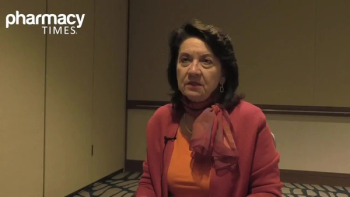Medication nonadherence, which is when patients do not take their medication as prescribed, is a major contributor to poor patient outcomes. Estimates suggest that patients are nonadherent to their medications approximately 50% of the time.1 This has added consequences for those with chronic diseases.
Surprisingly, most nonadherence is intentional. Patients make a conscious decision not to take their medications based on knowledge, experience, and beliefs.2
Common Reasons for Nonadherence
Fear
Fear, either realistic or unfounded, is responsible for a large portion of patients’ nonadherence. Fear of adverse effects is common because patients may have experienced them while previously taking the drug or a similar medication. Patients also may have heard negative statements about the medication from friends, family, or the media.2
Mistrust of physician motives for prescribing a medication is a relatively new concept. There has been an increase in news coverage of marketing efforts directed toward providers by pharmaceutical companies, creating suspicion in some patients. This coverage has been especially prevalent regarding opioid medications. As a result, patients may be unsure whether the prescription is necessary or hesitant to take a medication that could result in dependence.2
About the Author
Kathleen Kenny, PharmD, RPh, earned her doctoral degree from the University of Colorado Health Sciences Center in Denver. She has more than 30 years’ experience as a community pharmacist and works as a clinical medical writer based in Homosassa, Florida.
In addition, the recent scarcity of certain drugs has increased the rate at which the US is importing drugs from foreign manufacturers. Patients are often unsure whether the ingredients contained in these medications are pure and are being appropriately regulated.
Cost
Cost can be a major cause of deliberate nonadherence. High costs may lead to patients not filling their prescriptions or rationing medication so that it lasts longer.3 With the current high inflation rates, many patients are becoming more sensitive to high prices, especially older patients.
Misunderstanding
Many patients discontinue medication because they do not feel a noticeable difference when taking it. This is especially true for chronic diseases such as heart disease. Patients sometimes do not understand that the goal of taking a medication now is to reduce the risk of developing serious health complications in the future, even if they are not currently experiencing noticeable symptoms.2
Patients may also discontinue medication when they believe their health issue has been resolved and they no longer need to continue taking it. Alternatively, they may not even start the medicines because they are in denial about the disease.
Depression
Study findings have shown that patients with severe depression are 3.7 times more likely to be nonadherent to their medications than patients without depression. Additionally, adherence has been shown to increase as depression decreases. In some mental illnesses, inadequate adherence is among the main causes of the disease becoming chronic.4,5
Polypharmacy
Medication nonadherence is also a frequent consequence of polypharmacy. As individuals age, their medication regimens often become more complex. Patients with comorbidities are frequently prescribed multiple medications, leading to difficulties in self-managing their regimen and negative experiences with medication use.
Strategies to Reduce Nonadherence
Medication Reviews
Medication reviews are systematic evaluations of patient medications to ensure the therapeutic goals are being met and identify potential issues. Regular reviews can ensure patients are taking their medications as prescribed. This helps to reinforce the importance of adherence and allows for swift intervention in identified issues.6
Medication reviews also provide an opportunity to identify any unnecessary medications, allowing the pharmacist to request a discontinuation. This will reduce the risk of adverse events and simplify the medication regimen while simultaneously containing costs.6
Importantly, the personalized care provided during medication reviews also provides a platform for patients to express concerns and ask questions about their medications, leading to a more informed and engaged patient. Ensuring that medications are used appropriately and effectively decreases health care costs.6
Medication Synchronization
By aligning all prescription refills to a single date, the patient’s medication management complexity decreases, thereby reducing the likelihood of missed doses. Additionally, filling all medications simultaneously allows the pharmacist to review the patient’s regimen.
Shared Decision-Making
The risks and benefits associated with a certain medication should be clearly communicated by the prescriber and discussed with the patient. Often, however, this doesn’t happen. This communication must then come from the pharmacist. Involving the patient in decisions about their medical care and available options allows them to choose their care and builds trust between the pharmacist and the patient.
Patient Education
Lack of knowledge about the use of medications and various misperceptions about medications result in inappropriate use, especially nonadherence.7 Targeted education about the importance of medication adherence, including what the medication is for and how to take it correctly, empowers patients to manage their treatments effectively.
Cost Reduction
Evidence shows that prescription cost reduction does improve medication adherence. Although increased adherence rates do tend to increase health care spending on pharmaceuticals, these costs can be more than offset by reductions in emergency care and hospitalizations. Efforts to increase the affordability of medications are an important component of any complete strategy to improve medication adherence.8
REFERENCES
1. Brown MT, Bussell J, Dutta S, Davis K, Strong S, Mathew S. Medication adherence: truth and consequences. Am J Med Sci. 2016;351(4):387-399.doi:10.1016/j.amjms.2016.01.010
2. 8 reasons patients don’t take their medications. American Medical Association. February 22, 2023. Accessed August 1, 2024. https://www.ama-assn.org/delivering-care/physician-patient-relationship/8-reasons-patients-dont-take-their-medications
3. Kirzinger A, Montero A, Sparks G, Valdes I, Hamel L. Public opinion on prescription drugs and their prices. KFF. August 21, 2023. Accessed August 1, 2024. https://www.kff.org/health-costs/poll-finding/public-opinion-on-prescription-drugs-and-their-prices/
4. Goldstein CM, Gathright EC, Garcia S. Relationship between depression and medication adherence in cardiovascular disease: the perfect challenge for the integrated care team. Patient Prefer Adherence. 2017;11:547-559. doi:10.2147/PPA.S127277
5. Alemayehu Y, Asfaw H, Girma M. Magnitude and factors associated with treatment nonadherence among patients with depressive disorders at St. Amanuel Mental Specialized Hospital, Addis Ababa, Ethiopia, 2019: a cross-sectional study. PLoS One. 2022;17(7):e0271713. doi:10.1371/journal.pone.0271713
6. Medication therapy management (MTM). American Pharmacists Association Foundation. Accessed August 1, 2024. https://www.aphafoundation.org/medication-therapy-management
7. Tan CS. The need of patient education to improve medication adherence among hypertensive patients. Malaysian J Pharmacy. 2020;6(1). doi:10.52494/MOEL1486
8. Cong M, Chaisson J, Cantrell D, et al. Association of co-pay elimination with medication adherence and total cost. Am J Manag Care. 2021;27(6):249-254.doi:10.37765/ajmc.2021.88664


















































































































































































































